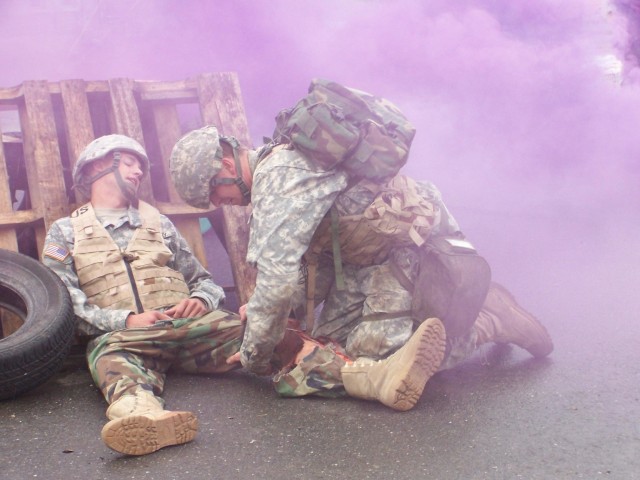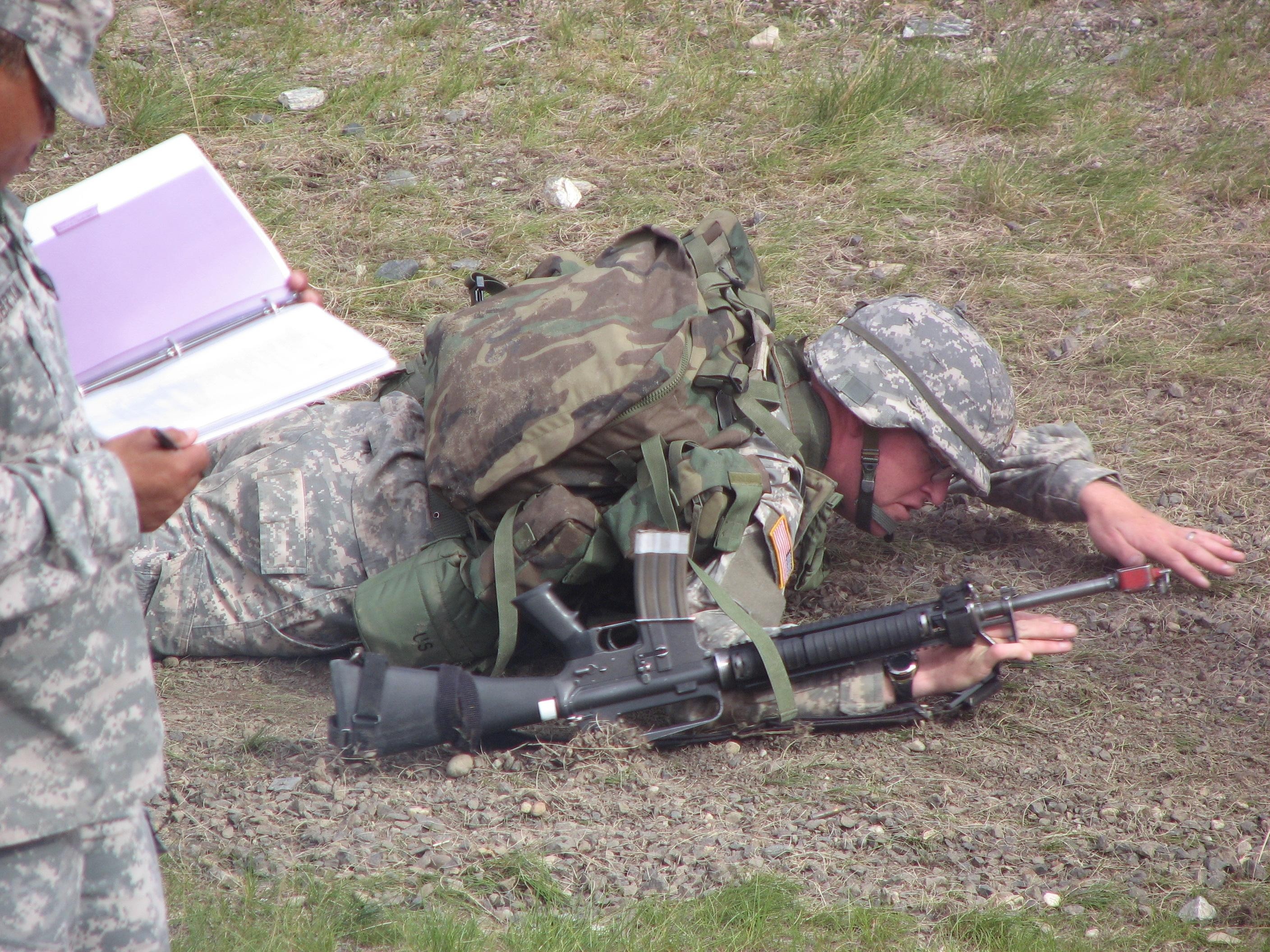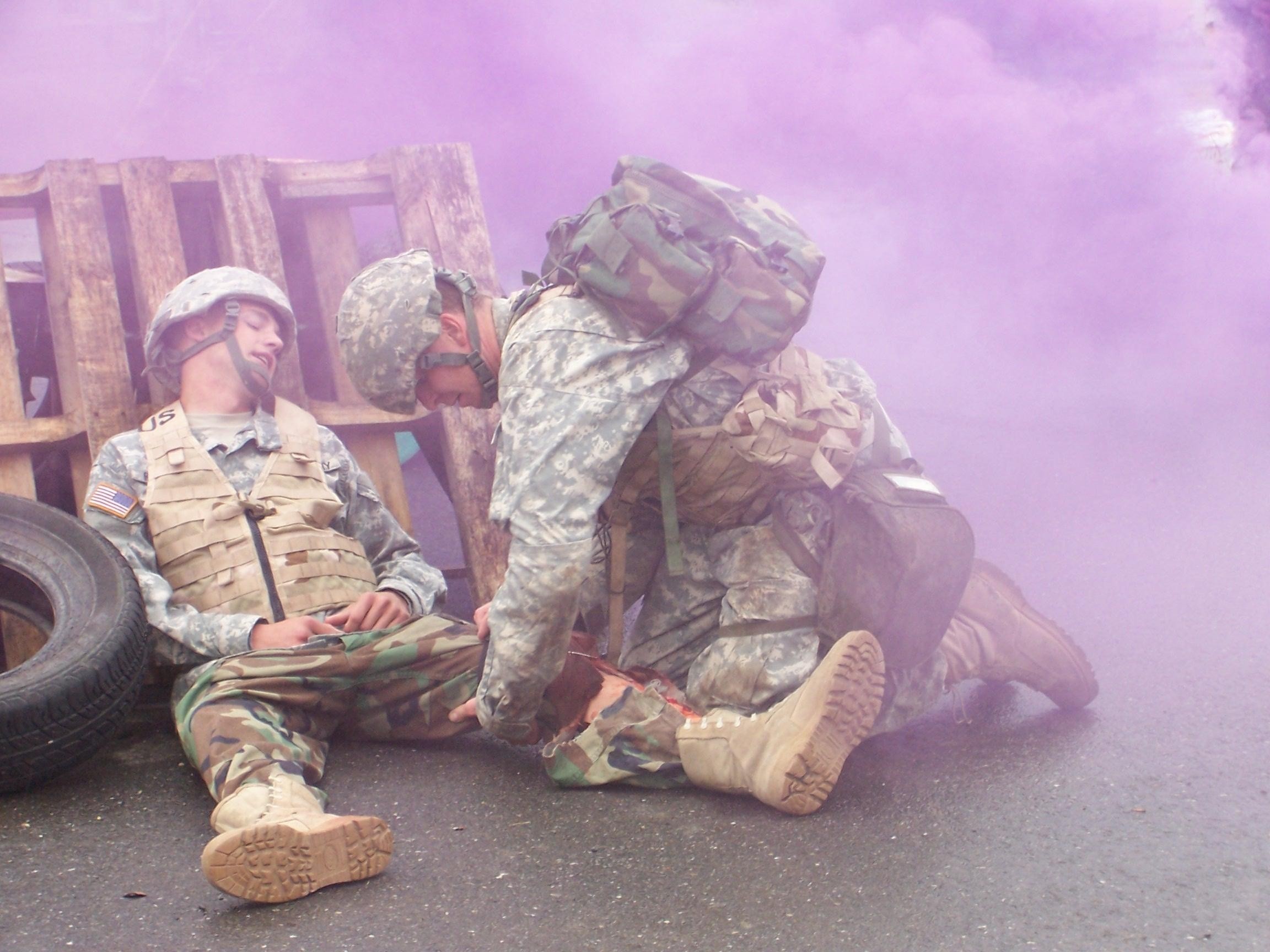The exhausted young medic carefully but quickly repacks his aid bag. His unit has just received word that a nearby American patrol has been hit and incurred several casualties. He is nervous but confident. He hears the sounds of not so distant battle as he boards a Stryker Recon vehicle with his two-man security team. Americans are in trouble and he is en route to help. They traverse hostile streets, streets that the S-2 has listed as "black," until the Stryker can progress no further.
As the ramp drops they are immediately met with small arms and indirect fire. A mortar round explodes nearby as they seek cover behind the remains of a brick wall.
A wounded American Soldier screams in agony from somewhere down the rubble-strewn street. The Soldier's right leg has been nearly severed. He will die without immediate medical attention. But the mortar rounds are still coming in and the small arms fire continues. The security team looks to the medic for guidance and the tired young medic must decide what to do. American lives are at stake...
So began the Tactical Combat Casualty Care (TC3) test lane of the Expert Field Medical Badge test recently hosted by the Arctic Wolves of the 1/25 Stryker Brigade Combat Team at Fort Wainwright, Alaska.
Challenging, relevant, and realistic training were the touchstone of the Arctic Wolves' EFMB. Sgt. Jusiewicz' comments served to validate this intent. The first step in ensuring these goals was to break tradition with legacy EFMB mentality and conduct the test in a Mission Operations in Urban Terrain site rather than in a wooded bivouac area.
"In the 42 year history of the EFMB the test has never been conducted at a MOUT site," said Maj. John Smith, Commander, BSMC, 25th BSB, and the EFMB Test Board Chairman. The MOUT site was used because it better reflects the current operating environment. Smith (a veteran of two combat tours in Iraq) added, "How the 1/25 SBCT incorporated EFMB performance tasks into combat-scenario testing lanes, and then conducted the lanes in urban terrain, made this a very realistic and challenging test. The pyro, sound systems, smoke generators, smell machines, and OPFOR accurately replicated the streets of Baghdad."
The EFMB is the most prestigious peace-time award available to Army medical personnel. It is intended to recognize medical personnel who attain a high degree of professional skill and proficiency as a combat medic. Eligible EFMB candidates must possess a medical MOS (sister service medical personnel are eligible), pass the APFT, qualify with their assigned weapon, and possess a current CPR certification.
Since its inception in 1965, approximately 95,000 Soldiers have competed for the EFMB with about a 20% success rate. At final count the Arctic Wolves' EFMB candidate list included 150 medical personnel from Hawaii, California, Kentucky, Washington state, and Washington D.C. Twelve were ultimately earned the EFMB.
The 25th Brigade Support Battalion had the lead in planning and overseeing this event. However, the 25th BSB and the 1/25 SBCT did not conduct the EFMB alone; it was a united effort involving numerous units on Fort Wainwright. MEDDAC-Alaska was especially helpful by providing the entire cadre for the TC3 lane as well as allowing their Command Sergeant Major to serve on the EFMB Test Board.
Maj. Smith said, "This EFMB was a great experience. It provided exceptional training for all candidates and it fostered a sense of camaraderie and accomplishment."




Social Sharing